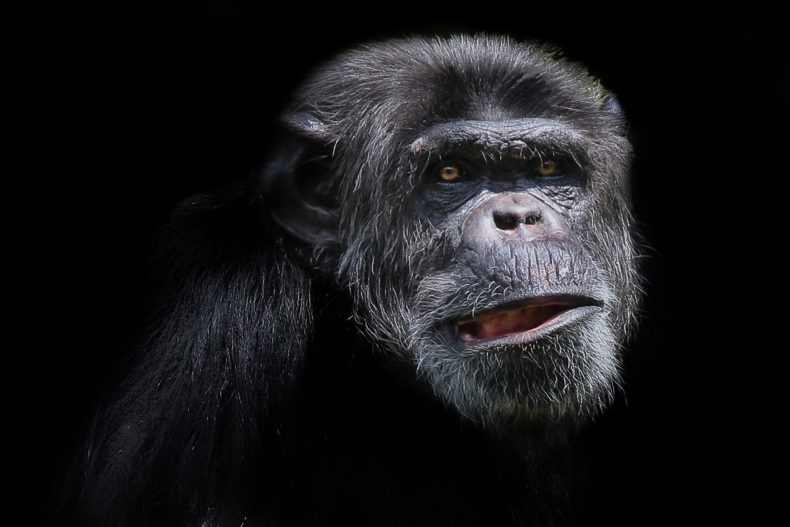In 2015, the National Institutes of Health announced the end of invasive chimpanzee research in the US. The agency had dramatically scaled back the program in 2013, and NIH director Francis Collins reported that due to lack of demand, he had decided to allow the remaining animals to retire as well. “It is clear that we’ve reached a tipping point,” he wrote. “I have reassessed the need to maintain chimpanzees for biomedical research and decided that effective immediately, NIH will no longer maintain a colony of 50 chimpanzees for future research.”
Collins explained that all NIH-owned chimps would be transferred to Chimp Haven, a chimpanzee sanctuary in Louisiana, “as space is available and on a timescale that will allow for optimal transition of each individual chimpanzee with careful consideration of their welfare, including their health and social grouping.”
But enacting that plan has proven more difficult than anticipated. According to a 2016 report from the Government Accountability Office, as of January, Chimp Haven housed less than a third of all the chimps owned or supported by NIH. Part of the problem is space. The facility can only accommodate about 230 animals. But there’s another, thornier issue: Not everyone agrees that Chimp Haven is the best place for these apes to spend their golden years.
Earlier this year, 19 chimps were transferred from the Southwest National Primate Research Center (SNPRC) in Texas to Chimp Haven. To David Pineda, who oversees the chimpanzee colony at SNRPC, each transfer feels like a loss. “They’re our kids,” he says.
Pineda started at SNPRC in 1974. He had just turned 18 when he landed a job as an animal caretaker. He hand raised many of the SNPRC’s chimps. He remembers changing diapers and bottle-feeding the babies. “You learn their attitudes and their dispositions. You learn to love these guys,” he says.
One of his favorites, Lisa, moved to Chimp Haven years ago. Pineda visited the facility a few years after she left, and spotted her and a few other familiar faces in one of the cages. “They all ran up to the wire. They were just like, ‘Come here. Come talk to me. Come touch me. Come give me a belly rub,'” Pineda says. He couldn’t, of course. The rules prevented him from touching the animals. “That was sad,” he says. “They don’t forget you.”
That’s why Pineda says it doesn’t make sense to uproot them. “They’re full grown, and they have to learn to start their life all over again. I think that’s the hardest and the cruelest part,” he says. “We’re all they know. We’re their family,” Pineda adds. “This is their home.”
https://youtu.be/HIwG8KOU3f8
SNPRC isn’t a sanctuary, but it doesn’t look like the typical image of a cramped research facility either. I toured the grounds in October. The chimps live in “primadomes,” huge outdoor cages composed of iron beams and reinforced wire. They have dirt and grass underfoot and open sky above. They can feel the breeze and the sun. Here “they get everything they need,” Pineda says — toys, protein bars, Flintstone vitamins, insulin, vaccines. And squirts of Hawaiian punch. “They love Hawaiian Punch,” he says.
Pineda isn’t the only one arguing that some of the nation’s chimps might be best off staying put. In 2014 and 2015, MD Anderson Cancer Center sent thirteen chimps from Texas to Chimp Haven. Nine died. The deaths prompted Cindy Buckmaster, director of Baylor’s Center for Comparative Medicine, to pen an article for Lab Animal titled “Dr. Collins, please save our chimps!” In that article, Buckmaster wonders “…why Dr. Collins would force these animals to leave everything they have known and everyone they love to go to a strange place, filled with strangers who cannot care for them nearly as well as their family at [MD Anderson Cancer Center]!”
Buckmaster’s missive sparked a debate that has grown increasingly hostile. I’ll let Wired’s Chelsea Leu sum it up:
‘[Buckmaster’s] article got picked up by an animal research advocacy group blog. Then, as all good Internet debates start, people began piling on in the comments—chimp researchers, vets, the members of the Chimp Haven board. The advocacy group, Speaking of Research, responded by publishing ever more heated blog posts, and the president of Chimp Haven, Cathy Spraetz, eventually released a message on the sanctuary’s website calling out the “volley of accusations from a vocal segment of lab-based individuals.”
While there may be valid reasons for wanting chimpanzees to stay put, NIH’s current plan, released in August, is to move all remaining research chimps to Chimp Haven by 2021. SNPRC’s chimps will be the last to go.
In 2012, before the fate of the national chimpanzee research program had been decided, NBC’s Rock Center ran a story about chimpanzee research. The team visited with researchers at SNPRC and filmed the chimps. They also interviewed primatologist Jane Goodall, who argued that research chimps ought to be retired and moved to sanctuaries. The problem is “not just the procedures,” Goodall said. “It’s the imprisonment. It’s being kept in a small space with no choice. You just are there. You’re powerless.”
But that’s the wrong way of framing the issue. Chimps don’t have a choice. It’s us who decided to experiment on them, and it’s us who decided to stop. And now it’s on us to decide where these animals should live out their days. Chimps in a sanctuary don’t have any more power than chimps in a lab. The power is ours, and it always has been.
****
Image courtesy of Patrick Bouquet via Flickr
